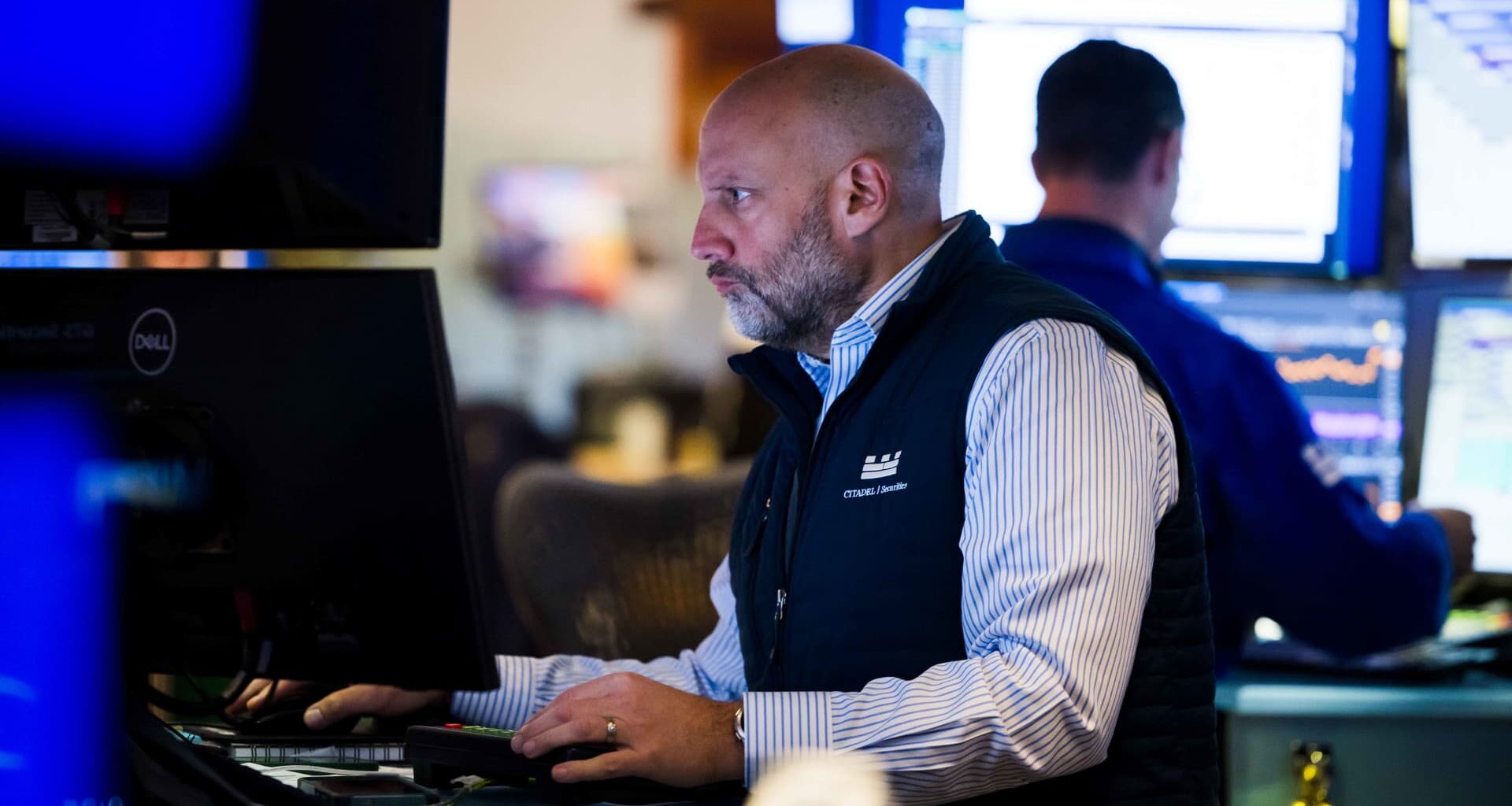Traders work at the New York Stock Exchange on Nov. 3 2025.
NYSE
Stock futures fell Tuesday, pressured by declines in artificial intelligence-related names.
Futures tied to the Dow Jones Industrial Average fell 338 points, or 0.7%. S&P futures slipped 1%, while Nasdaq 100 futures ticked down 1.3%.
Palantir shares shed 6.8% even as the software company beat Wall Street’s estimates for the third quarter and gave strong guidance, fueled by growth in its artificial intelligence business.
“Their results were good but markets were disappointed at the lack of company visibility for the whole of 2026,” wrote Deutsche Bank strategist Jim Reid. He also alluded to valuation concerns around Palantir. The stock trades at 301 times forward earnings, while the S&P 500 sports a 25.7 multiple, per FactSet.
Other AI stocks such as Nvidia and Amazon fell more than 1% each in the premarket Tuesday. Meta Platforms and Google-parent Alphabet were also lower.
Wall Street is coming off a mixed session. The S&P 500 and Nasdaq ended Monday higher, while the Dow fell more than 200 points.
More than 300 stocks in the broad-market index closed in the red on Monday, adding to concerns about weak breadth and high levels of tech concentration — particularly after the number of S&P 500 stocks that gained last month was smaller than the amount that declined.
Strong third-quarter results and higher AI spending plans from hyperscalers have propped up the bull market. To be sure, the performance of stocks in the “Magnificent Seven” has become more divided. So far, over 300 S&P 500 companies have posted quarterly results so far with more than 80% of those beating expectations, according to FactSet.
“I don’t buy this broader argument that this is some underloved, hated rally,” Tony Pasquariello, Goldman Sachs global head of hedge fund coverage, said Monday on CNBC’s “Closing Bell.” He advocated for investors to “stick with the freight train that is megacap tech” as he believes catalysts such as upcoming Federal Reserve interest rate cuts and strong capex spending should continue supporting gains.
“I don’t think risk-reward is as good as it was three or six months ago,” Pasquariello added.
